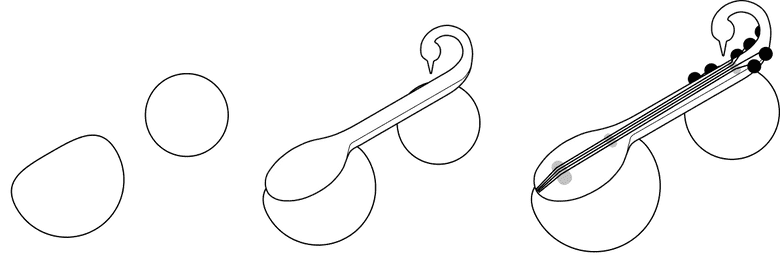The Making of Chandraveena
During one of the many discussions and conversations on music I have had with Ustad Z F Dagar, both he and Bahauddin Dagar suggested to me that I should explore the idea of playing Saraswati Veena all over again (because of my early training on that instrument), and this time in Dhrupad style! How I reached that point is a story in itself which you can read here.
When the idea of playing Dhrupad on Saraswati Veena was mooted by Ustad Z F Dagar and Ustad Bahauddin Dagar, I took up the idea with excitement but also some trepidation. Even though I had some early basic training in Saraswati Veena - which is what gave the idea to the Ustads - it was more than 15 years since I had last played the instrument. In the interim 15 years, all my training was on Sarod and the concepts of Dhrupad.
However, I decided to take up the challenge. I started in earnest by going to Chennai to get a standard Saraswati Veena. It was like trying to bike after 15 years! Even though I had knowledge of some of the Veena playing techniques, it took me a while to get the balance and to be able to understand the instrument. It was back to the basics, learning to pedal, learning to look straight and maintain balance without falling off! However, muscle memory is quite powerful. A couple of years down the line, slowly but steadily, I was learning the ropes of Veena playing, and gradually progressing.
After a few years, I started attempting to play Dhrupad on the Saraswati Veena, in an as-is condition of the instrument. Later, I made a few changes, like changing the main bridge from brass top to horn, and also adding an extra resonator at the top end. Some of these changes were experimental, aimed at understanding the potential of the instrument, and its limitations for the style I wished to pursue on it.
As I started deeper study and understanding of Dhrupad, and also understanding the response of Saraswati Veena better, I also realised better the shortcomings of the instrument for the style I wished to pursue, and the changes I would need to bring in to adapt the instrument to my desired style.
Based on my understanding of Physics and Acoustics of instruments, and my experiments and experience with Saraswati Veena, I started designing a new Veena. Structurally based on Saraswati Veena, the new Veena was designed to meet the demands of the style — which is characterised by slow moving long phrases, and subtle variations of notes - both of which demanded high resonance and sustain.
Here are some of the changes that were devised compared to Saraswati Veena, to attain the musical needs:
- The wooden resonator bowl of the Saraswati Veena was replaced by a gourd (pumpkin) resonator which offers better resonance than wood.
- The size of the resonator was increased to provide a higher volume of air.
- The soundboard size was accordingly increased to offer greater vibration, especially at the lower frequency register of the instrument.
- The vibrating length was increased, which offered more scope for subtle variations on notes.
- The thickness of the strings were increased, which gave depth to the sound of the instrument.
- The fret length was increased, which offered greater scope for creating longer phrases on a single fret.
With this design, I started going in search of Veena makers in Mysore, Thanjavur, Trichy, Kolkata, and so on. Eventually I landed at the doorstep of someone who became my guide and instrument maker - the late Mohan Lal Sharma of Kolkata. Even though my initial approach to Mohan Lal Sharma was for Sursringar, he eventually agreed to be part of my experiments.
Necessity is the mother of Invention
In the end, it was the limitations of Saraswati Veena to effectively portray my Ustad’s style of music that led to the creation of Chandraveena. Mohan Lal Sharma created the first prototype of what eventually was christened “Chandraveena” by Ustad Z F Dagar and Ustad Bahauddin Dagar. Even though Chandraveena has the capability to communicate my music effectively, the experiments and process to continually improve its acoustics is still very much an on-going project. After the demise of Mohan Lal Sharma, I have been fortunate to find another traditional instrument maker - Majid Satarmaker from Miraj. He has undertaken all further changes to Chandraveena as required by me, and even has made a Chandraveena for me which I extensively use.
So far, you have read about the reasons for and the design of Chandraveena. In my next post on The Musical Story of Chandraveena and the accompanying video, I practically demonstrate how the instrument’s design has helped to establish my musical style on Chandraveena.
